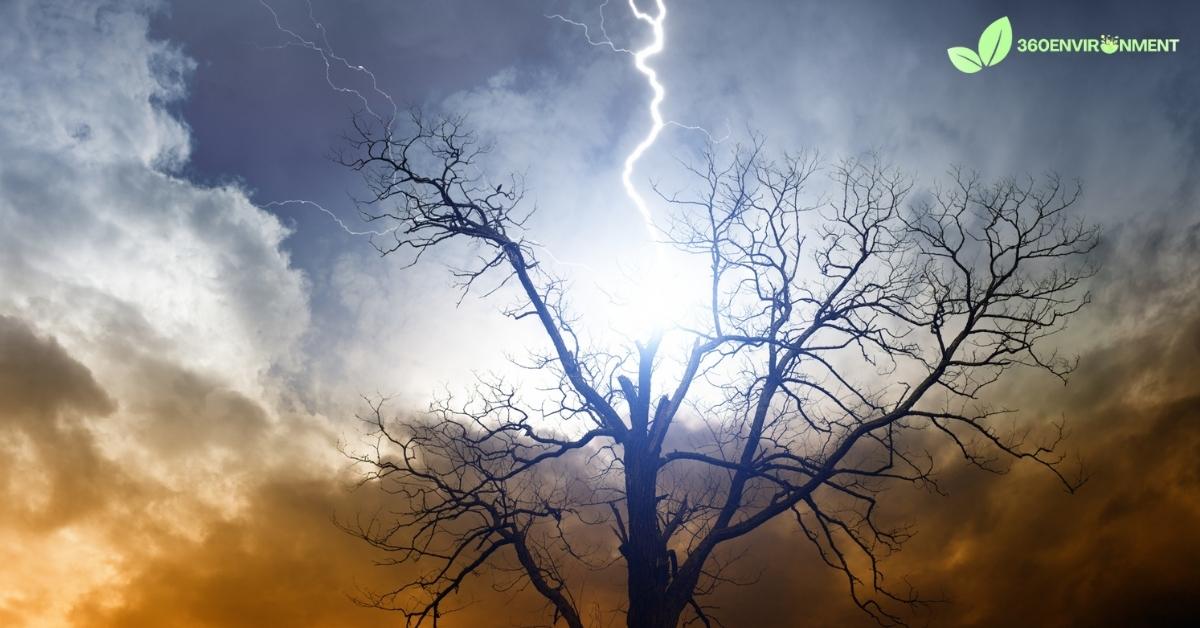A lightning struck tree is one of nature’s most dramatic displays of power, as a single bolt of lightning can split, scorch, or even completely destroy a tree in seconds. Lightning strikes millions of trees around the world each year, and while the immediate visual damage is striking, the long-term ecological impacts are equally fascinating. Far from being simply a destructive event, lightning striking a tree can lead to significant changes in an ecosystem, affecting not just the tree itself but also the surrounding plants, animals, and overall environmental health.
In this article, we will explore the environmental niche of a lightning struck tree, examining its role in forest ecosystems, how trees recover or decompose after such an event, the impact on local biodiversity, and the broader significance of lightning strikes in shaping landscapes. Understanding the effects of lightning on trees helps us better appreciate the interconnectedness of natural events and the resilience of ecosystems.
1. The Science Behind Lightning Strikes and Trees
Before diving into the ecological impacts, it is important to understand how lightning interacts with trees and why trees are frequently struck. Trees are particularly vulnerable to lightning strikes due to their height and moisture content, but not all trees are affected equally.
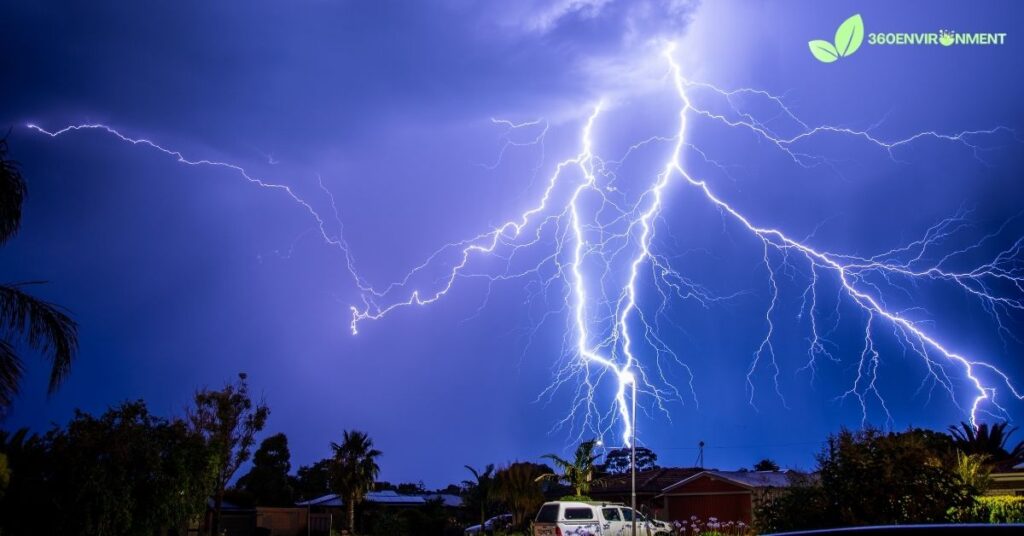
1.1. Why Trees Get Struck by Lightning
Lightning occurs when there is a buildup of electrical charge in the atmosphere, typically during thunderstorms. As the charge seeks a path to the ground, it often targets the tallest objects in its path—making trees a common target.
- Height and Isolation: Trees that stand taller than their surroundings, or those growing alone in open areas, are more likely to be struck. This is because they serve as a natural conductor for the electrical charge that lightning seeks to release into the ground.
- Water Content: Trees contain a high amount of water, particularly in their inner layers (sapwood). This makes them more conductive than dry objects, which increases the likelihood of a lightning strike. The water in the tree can turn to steam during a strike, sometimes causing the tree to explode or crack due to the sudden increase in pressure.
1.2. Types of Damage Caused by Lightning
Lightning can cause different levels of damage to a tree, depending on factors such as the tree species, moisture content, and the intensity of the lightning strike. The damage can range from minor scarring to complete destruction.
- Bark Stripping: In many cases, lightning will cause the bark of the tree to split or peel away. This is due to the extreme heat generated during the strike, which can cause the moisture in the bark to evaporate rapidly.
- Branch Splitting: Lightning may travel down the trunk and into the branches, causing them to split or break off. In severe cases, the entire tree may be split in two or large sections of the canopy may be damaged.
- Scorching and Charring: Some trees may exhibit external signs of burning, such as scorched bark or blackened branches, though this is often limited to the area where the lightning entered or exited the tree.
2. Ecological Effects of a Lightning Struck Tree
A tree struck by lightning may initially appear to be an unfortunate casualty, but in reality, this event can have a range of ecological effects. Lightning strikes can alter the dynamics of a forest or woodland ecosystem, influencing the distribution of plants and animals and contributing to nutrient cycling.
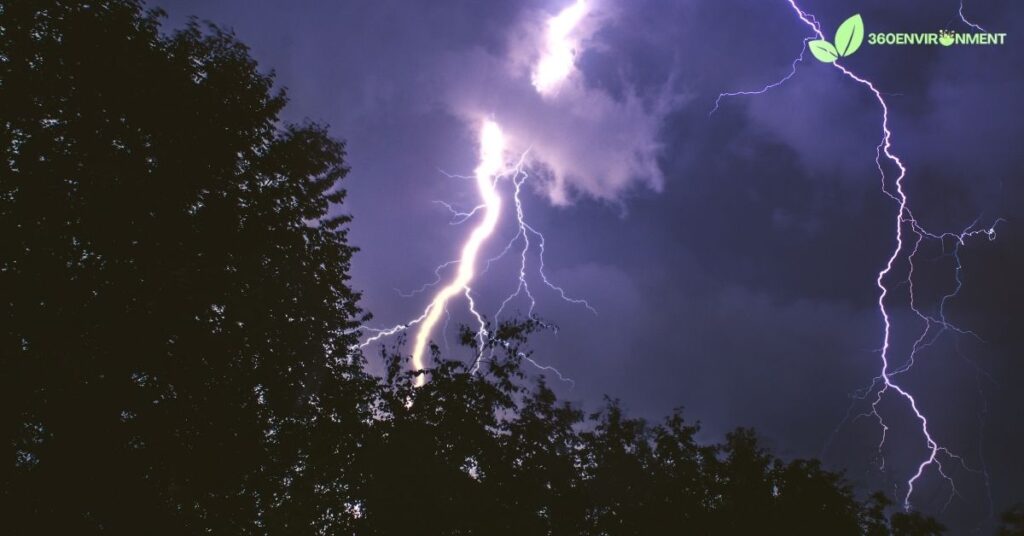
2.1. Impact on Tree Health and Survival
Not all trees struck by lightning die immediately. Some trees are able to recover from a strike, while others may die slowly over time. The long-term survival of a lightning struck tree depends on the extent of the damage and the species of the tree.
- Tree Survival: Trees such as oaks, pines, and cypress are known for their ability to survive lightning strikes. These species often have thick bark or are able to compartmentalize the damage, preventing the spread of injury to vital parts of the tree. However, even surviving trees may become more susceptible to diseases or insect infestations due to the weakened state of their bark or wood.
- Slow Decay and Death: In some cases, a tree may survive the initial strike but slowly die over the following months or years. This gradual decline can create a niche for various organisms, such as fungi, wood-boring insects, and decomposers, which break down the dying tree and recycle its nutrients.
2.2. Creation of Wildlife Habitats
One of the most significant ecological impacts of a lightning struck tree is the creation of new habitats for wildlife. As the tree weakens or dies, it becomes a resource for many different species, from insects to birds and mammals.
- Cavity Formation: Lightning strikes often create hollows or cavities in the trunk or branches of a tree. These cavities provide important nesting and sheltering sites for birds, bats, and small mammals. Owls, woodpeckers, and raccoons, for example, may use the hollowed-out sections of a lightning struck tree as a safe place to raise their young.
- Standing Snags: If the tree dies but remains standing, it becomes what is known as a snag—a dead tree that still provides valuable habitat. Snags are critical for many species of birds and insects, including woodpeckers, which use the dead wood to find food or create nesting cavities.
2.3. Increased Biodiversity Around the Struck Tree
A lightning strike can create a micro-habitat within a larger ecosystem, increasing biodiversity by providing new opportunities for plants and animals to thrive. The changes to the tree, as well as the surrounding soil and plant community, can attract a variety of species that were not previously present.
- Insect Colonization: Lightning-damaged trees are often quickly colonized by insects, including beetles, ants, and termites. These insects take advantage of the weakened wood to burrow, lay eggs, or feed. In turn, these insects become food for birds, mammals, and other predators, adding another layer to the ecosystem.
- Fungal Growth: Fungi, which are essential decomposers, often colonize the damaged wood of a lightning struck tree. The presence of fungi can help accelerate the breakdown of the tree, returning nutrients to the soil and providing food for other organisms, such as insects and small mammals.
2.4. Contribution to Nutrient Cycling
A tree struck by lightning, whether it survives or dies, plays a key role in nutrient cycling within its ecosystem. The decomposition of the tree, whether partial or complete, releases nutrients such as carbon, nitrogen, and phosphorus back into the soil, which can be used by surrounding plants.
- Decay Process: As the tree decays, it contributes to the formation of humus, a rich organic material that improves soil structure and fertility. The slow release of nutrients from the decomposing wood supports the growth of new plants, helping to regenerate the forest or woodland.
- Soil Enrichment: In some cases, lightning strikes may also affect the soil directly by creating localized changes in the chemical composition of the ground. The heat generated by lightning can break down organic matter in the soil, releasing nutrients that can be quickly absorbed by nearby plants.
3. Role of Lightning Struck Trees in Forest Dynamics
Lightning strikes are a natural disturbance in forest ecosystems, and they can influence the structure and dynamics of a forest over time. While the immediate effects of a lightning strike are often localized, the long-term impacts can shape the composition and function of the forest as a whole.
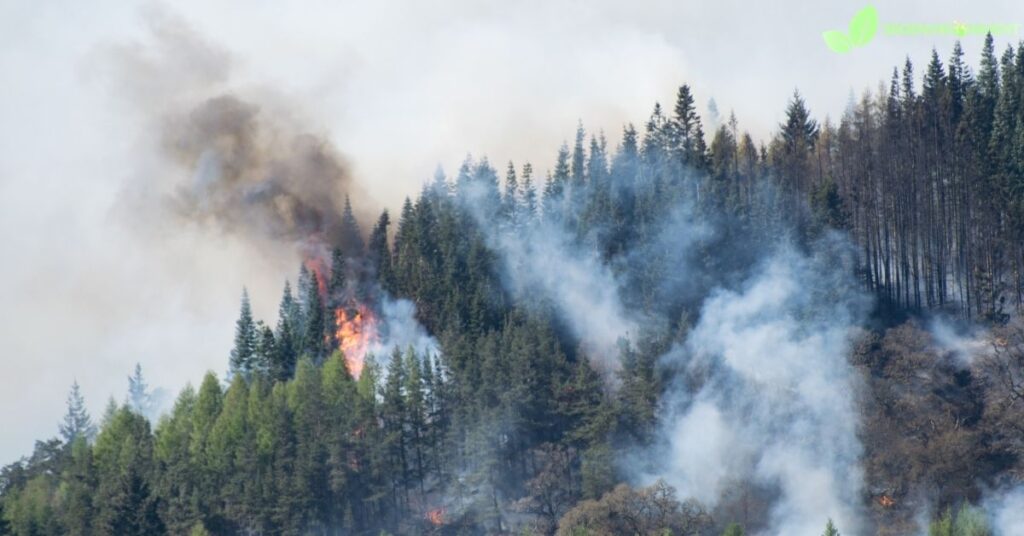
3.1. Forest Regeneration and Succession
In some cases, lightning strikes can initiate the process of forest regeneration and succession by creating openings in the forest canopy. These gaps allow sunlight to reach the forest floor, promoting the growth of new plants and trees.
- Canopy Gaps: When a large tree is struck by lightning and either dies or loses a significant portion of its canopy, a gap is created in the forest. These gaps are critical for the growth of understory plants and young trees, which require sunlight to thrive. Over time, these plants may grow to fill the gap, contributing to the natural cycle of forest succession.
- Regrowth and Competition: The creation of a canopy gap can also trigger competition among plants and trees for light, water, and nutrients. Some species, such as fast-growing pioneer species, may take advantage of the gap to establish themselves, while slower-growing species may struggle to compete.
3.2. Fire Risk and Forest Health
In some cases, a lightning struck tree may increase the risk of fire, particularly in dry or fire-prone ecosystems. While this may seem destructive, fire is a natural part of many ecosystems and can contribute to forest health by removing dead material and promoting new growth.
- Fire Hazard: Trees that are struck by lightning and left standing may become dry and brittle over time, increasing the risk of fire. In fire-adapted ecosystems, such as certain types of grasslands or pine forests, lightning strikes may even be a key factor in starting natural wildfires that help maintain the balance of the ecosystem.
- Ecological Benefits of Fire: In some forests, fire is necessary for the regeneration of certain plant species. For example, many pine species rely on fire to open their cones and release seeds. In these ecosystems, lightning strikes and the fires they may cause can play a critical role in maintaining biodiversity and forest health.
4. The Broader Environmental Significance of Lightning Strikes
While the impact of a single lightning strike on a tree may seem isolated, lightning plays a broader role in shaping landscapes, influencing climate patterns, and maintaining ecosystem health.
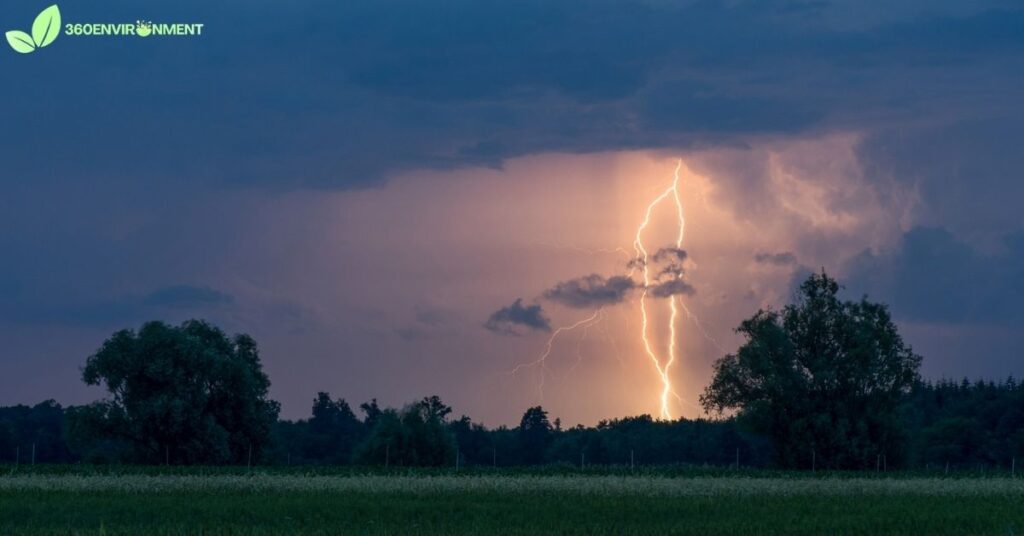
4.1. Lightning as a Natural Disturbance
Lightning is a natural disturbance that, like wind, fire, and flooding, can shape the structure and composition of ecosystems. These disturbances are an integral part of the dynamic processes that drive ecosystem change and regeneration.
- Forest Dynamics: In many forest ecosystems, lightning strikes are one of the primary ways that large trees are removed, creating space for new growth. These natural disturbances help maintain the diversity and complexity of the forest by preventing any one species from dominating the landscape.
- Landscape-Level Effects: On a larger scale, lightning strikes can influence the distribution of plant and animal species across a landscape. For example, in savannas or grasslands, lightning-initiated fires may create a patchwork of habitats that support a wide range of species, from grazing animals to predators.
4.2. Atmospheric and Climate Effects
Beyond its ecological effects, lightning also plays a role in atmospheric chemistry and climate regulation. The energy released during a lightning strike can influence the composition of the atmosphere, with implications for both local and global climate patterns.
- Nitrogen Fixation: Lightning is a natural source of nitrogen fixation, a process that converts atmospheric nitrogen into a form that can be used by plants. When lightning strikes, it breaks apart nitrogen molecules in the air, allowing them to combine with oxygen to form nitrogen oxides. These compounds are then deposited in the soil by rain, where they can be used by plants to support growth.
- Greenhouse Gas Emissions: In some cases, lightning strikes can also contribute to the release of greenhouse gases such as methane and carbon dioxide. This is particularly true in wetlands or peatlands, where lightning-initiated fires can release large amounts of stored carbon into the atmosphere.
5. Human Interaction with Lightning Struck Trees
Throughout history, humans have been both fascinated and frightened by lightning struck trees. These trees have appeared in mythology, folklore, and even religious symbolism, often representing the power of nature or the wrath of the gods.
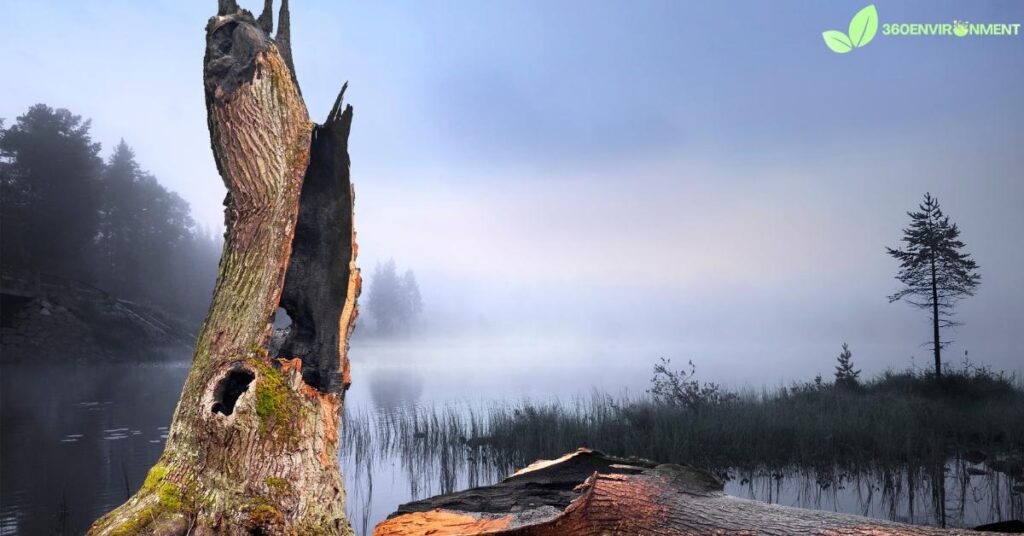
5.1. Cultural and Symbolic Significance
In many cultures, lightning struck trees are seen as powerful symbols of transformation, destruction, or divine intervention. These trees have been revered, feared, and sometimes even used in rituals or ceremonies.
- Mythology and Religion: In various mythologies, lightning is associated with gods or spirits of thunder and storms. Trees struck by lightning were often viewed as sacred or cursed, depending on the cultural context. In some traditions, lightning-struck wood was used to create protective amulets or talismans.
- Folklore and Superstition: In folklore, lightning struck trees are sometimes believed to be inhabited by spirits or to possess magical properties. In some cultures, it was thought that standing near a tree that had been struck by lightning could bring good luck or protection from future storms.
5.2. Practical Uses of Lightning-Struck Wood
In addition to its symbolic significance, wood from lightning struck trees has also been used for practical purposes. The unique patterns and markings created by lightning strikes can make the wood valuable for crafting and woodworking.
- Woodworking and Art: Some artisans seek out lightning-struck wood for use in furniture, sculptures, or other works of art. The natural scars and cracks left by the lightning create distinctive patterns that are prized for their aesthetic appeal.
- Firewood: In some cases, wood from lightning struck trees is harvested for firewood. While the wood may be brittle or damaged, it can still be used as a fuel source, particularly in rural or forested areas where access to other types of wood may be limited.
Conclusion: The Ecological Importance of Lightning Struck Trees
A lightning struck tree is far more than a victim of nature’s fury—it is a critical part of the ecosystem, contributing to biodiversity, nutrient cycling, and forest dynamics. Whether a tree survives or dies after being struck, it plays a vital role in supporting wildlife, promoting forest regeneration, and enriching the soil.
Understanding the environmental niche of a lightning struck tree helps us appreciate the resilience and complexity of ecosystems, where even destructive events like lightning strikes have positive, long-term impacts on the health and balance of the natural world. By recognizing the importance of these natural disturbances, we can better understand the dynamic processes that shape the landscapes around us.
Read More: Desert Trees: Adaptations and Importance in Arid Environments

